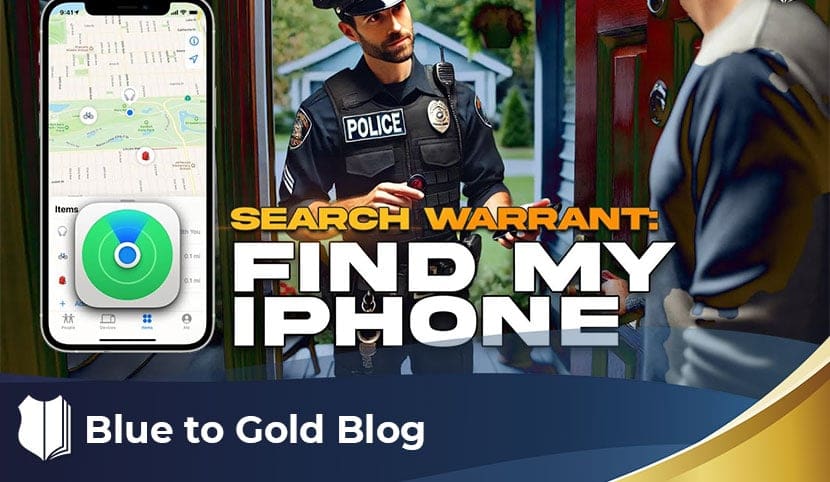Can a Find My iPhone ping provide probable cause for a search warrant?
The officer asks:
“We’ve had an influx of stolen or lost phones, and the owners are asking for our help in retrieving them. It’s been our practice to go to the residence where the phone is pinging, do a knock-and-talk, and if they deny having the phone or decline a search, we leave without many options. I’ve done some research and found cases where Find My iPhone was used as a basis for detention and searches, but I haven’t found anything specific to homes. What are your thoughts?”
Step 1: Is Using Find My iPhone a Fourth Amendment Search?
The short answer is no.
Let’s say the phone is stolen. A defense attorney might argue, “You didn’t have the defendant’s consent to track the phone, so you violated their reasonable expectation of privacy.” But that argument doesn’t hold water.
Courts have long upheld cases involving stolen cars with tracking systems like OnStar or LoJack. If the owner provides access to tracking information, that’s not a search under the Fourth Amendment. Thieves don’t have a reasonable expectation of privacy in stolen property emitting signals.
The same principle applies to phones. If a defendant steals a phone that transmits tracking information, they can’t claim a Fourth Amendment violation when that data leads to their location.
Step 2: Using the Ping to Locate a Phone
If a Find My iPhone ping leads you to a residence, a knock-and-talk is an excellent starting point.
- Scenario 1: The person admits they found the phone. Great! You’ve recovered the property.
- Scenario 2: The person denies having the phone or refuses to let you search. Now what?
This brings us to the critical question: Does the ping alone provide probable cause for a search warrant?
Step 3: Does the Ping Provide Probable Cause?
The answer is maybe—it depends on the circumstances.
Scenario 1: A Farmhouse in Rural Nebraska
If the ping leads you to the only farmhouse for miles and indicates the phone is inside, that’s probable cause. Where else could the ping be coming from?
Scenario 2: An Apartment Complex in New York
If the ping leads you to an apartment building, probable cause becomes murkier. These pings can be off by several meters—sometimes 15 meters or more—which could mean the phone is in a neighboring unit.
Scenario 3: A Suburban Neighborhood
If the ping places the phone in a specific house in a neighborhood, there’s still some uncertainty. Anyone who’s used Find My iPhone knows its accuracy can vary. For example, it might show the phone at one house when it’s actually next door.
Step 4: Totality of the Circumstances
When determining probable cause, courts consider the totality of the circumstances. A ping alone might not be enough, especially in densely populated areas. You’ll need additional corroborating evidence, such as:
- Behavior of the Resident: Did they admit to finding a phone but refuse to show it?
- Prior Knowledge: Is this address associated with criminal activity or known suspects?
- Vehicle Registration Checks: Do the registered owners have a history of theft or other crimes?
- Audible Confirmation: Use Find My iPhone’s “Play Sound” feature. If you hear the phone ringing inside the residence, that’s strong evidence.
Practical Tips
- Avoid relying solely on a ping. It’s not precise enough in urban or suburban areas to provide standalone probable cause.
- Document additional factors. If the location is associated with prior crimes, suspicious behavior, or other corroborating evidence, include these details in your warrant application.
- Be cautious in urban areas. The less specific the ping, the more evidence you’ll need to justify a search.
Looking Ahead
Maybe in a few years, GPS technology will become so precise that courts will accept a ping as definitive proof. But for now, they’re likely to require additional corroboration.
Final Thoughts
This is a great question. I understand the hesitancy to act based solely on a ping. Courts want to see a thorough consideration of the totality of the circumstances before issuing a warrant.
Until next time, stay safe!








